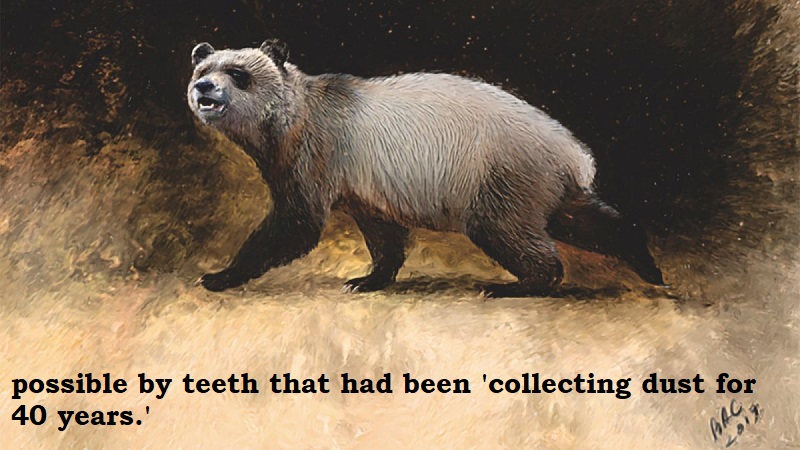
A previously unknown species of European panda has been found; it is thought to have inhabited the continent some six million years ago. A pair of ancient teeth that had been hidden in a storage facility for 40 years led to the discovery of this species, which is probably the last panda in Europe. The upper canine and upper molar fossil, which was discovered in northwest Bulgaria in the late 1970s, was eventually stored at the Bulgarian National Museum of Natural History in Sofia, according to a report by Live Science.
It’s incredible that this find went unnoticed for forty long years because it wasn’t properly catalogued and was therefore ignored. Recently, museum staff stumbled onto the peculiar-looking teeth and decided to investigate further.
The teeth were quickly examined, and it became clear that they were not like any of the previously known species of European pandas or newly discovered fossils. The species known as Agriarctos Nikolovi possessed teeth that were significantly larger than those of the bulk of European panda species. The recently found Agriarctos Nikolovi has teeth that are nearly as big as the gigantic pandas we are familiar with today.
Furthermore, compared to other panda fossils discovered in Europe, some of which are older than 10 million years, the teeth are considerably more recent, suggesting that A. Nikolovi was likely the last panda species to live on the continent.
However, despite the similarities the modern pandas are not a direct descendent of this species, but ‘is a close relative’ says study co-author Nikolai Spassov, a palaeontologist at the Bulgarian National Museum of Natural History.
He said, ‘This discovery reveals how little we still know about prehistoric nature.’
According to the study’s authors, climate change may have had an effect on A. Nikolovi’s habitat and diet, which may have finally resulted in its extinction.

Post Your Comments